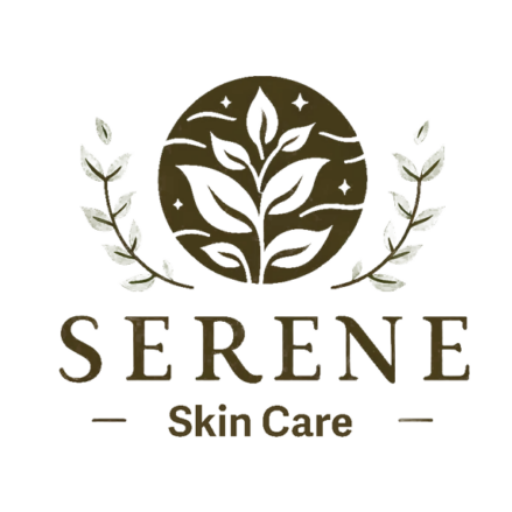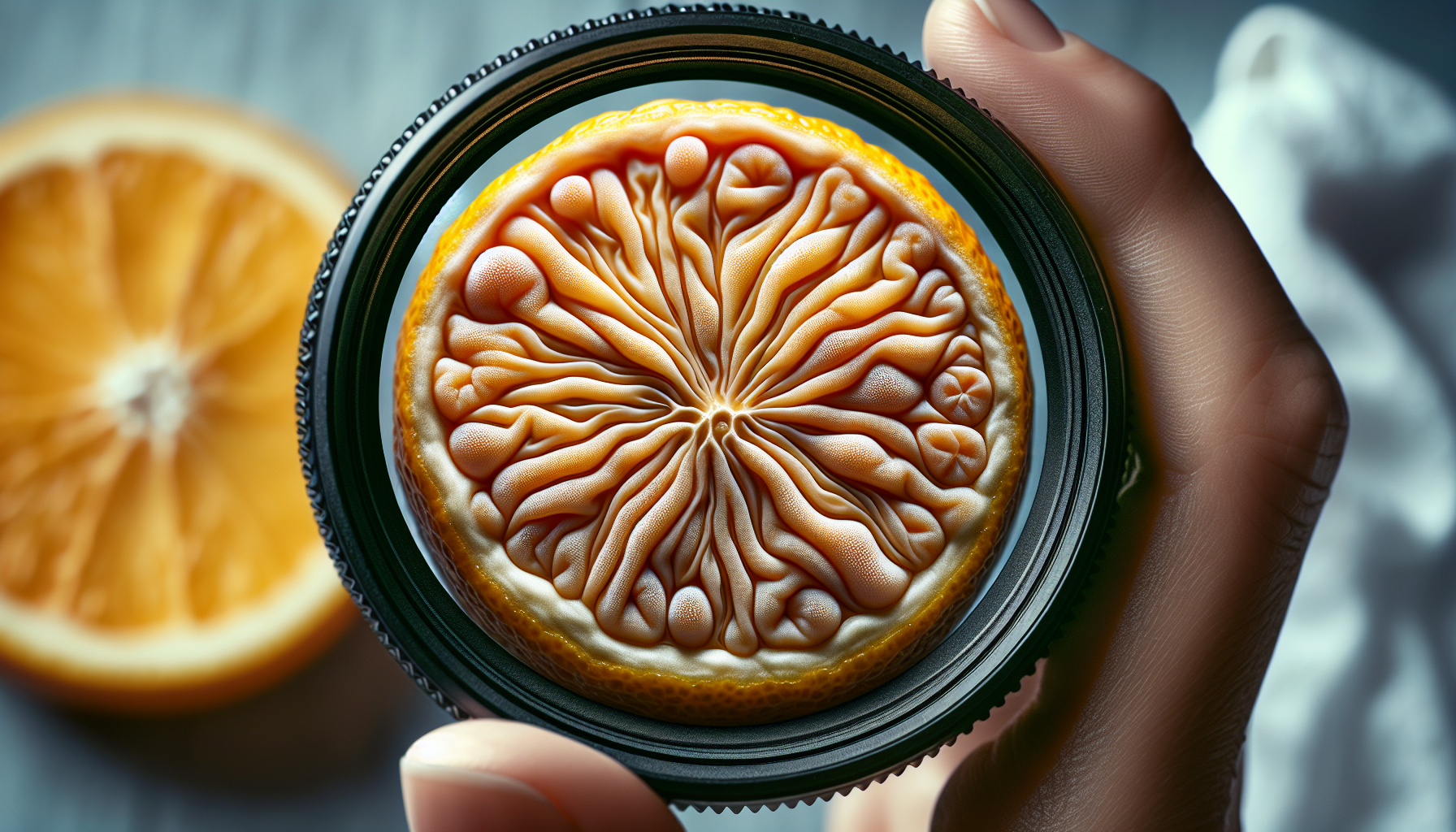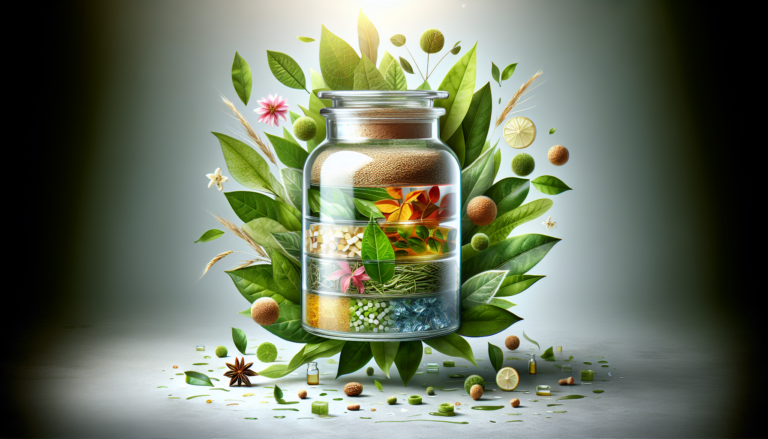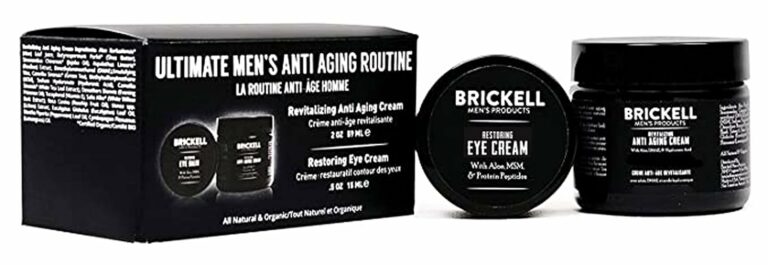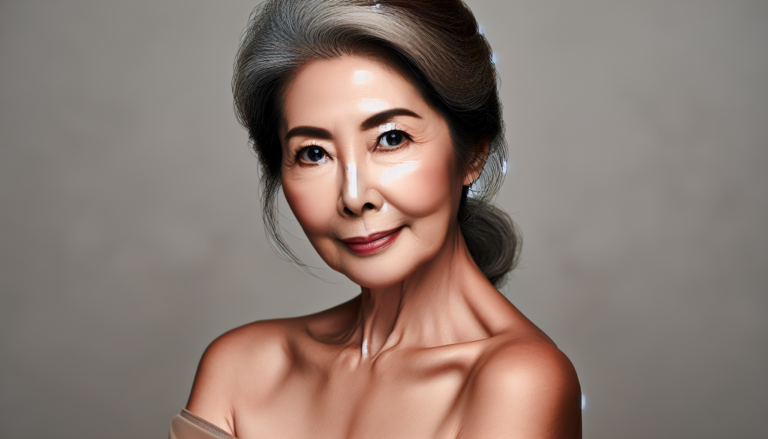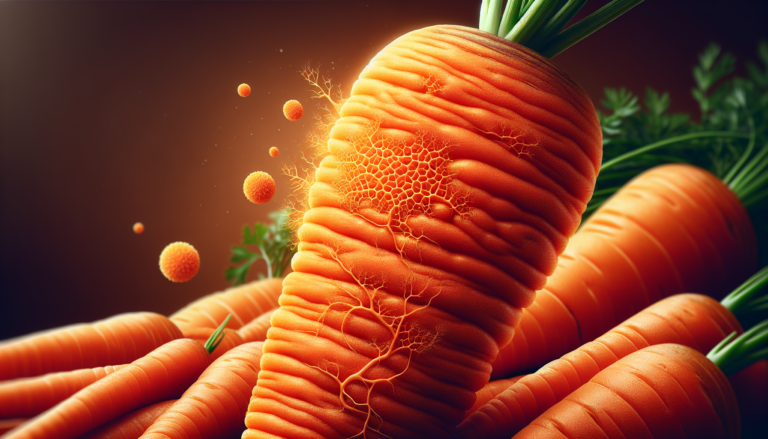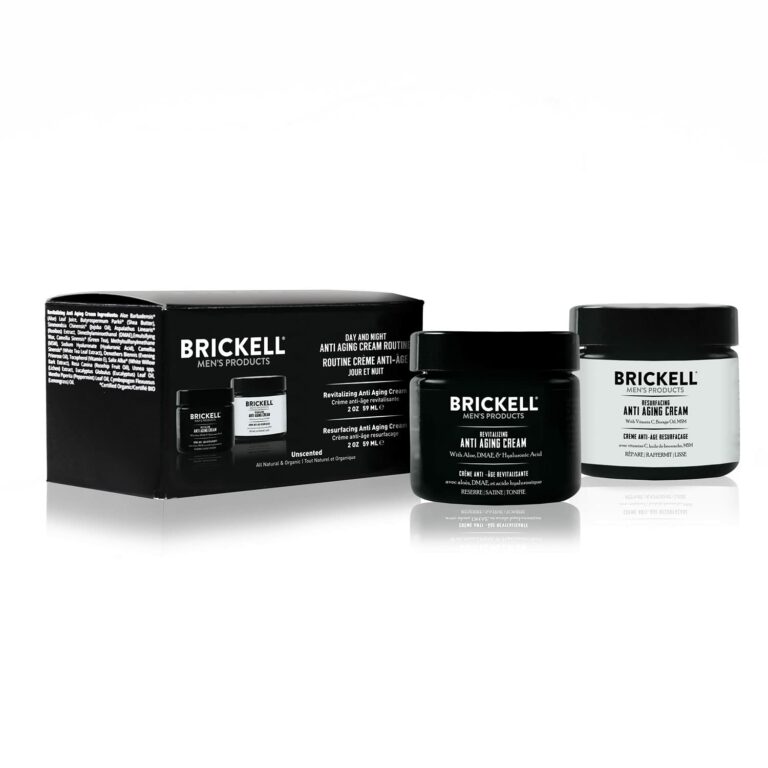In the quest for youthful and radiant skin, it is crucial to comprehend the concept of glycation and its impact on our skin. Glycation, a natural process in which sugar molecules attach to proteins, can cause a detrimental effect on our skin’s elasticity and collagen production. However, fear not, as there are ways to combat glycation and preserve our skin’s youthful appearance. By adopting a skincare regime that includes antioxidants, such as vitamin C and green tea extract, and avoiding excessive sugar consumption, we can effectively combat glycation and maintain healthy, glowing skin.
What is Glycation?
Definition
Glycation is a natural process that occurs when sugar molecules in our bloodstream bind to proteins and fats, forming harmful compounds called Advanced Glycation End-products (AGEs). These AGEs can accumulate and wreak havoc on various parts of our bodies, including our skin.
How it Affects the Skin
Glycation affects the skin in several ways. One of the most significant impacts is the formation of AGEs, which can lead to decreased collagen and elastin production. Collagen and elastin are essential proteins that provide strength and elasticity to our skin. When their production is reduced, the skin becomes less firm, leading to sagging and wrinkles. Additionally, glycation promotes inflammation, which can further exacerbate skin aging. The combination of decreased collagen and elastin production, increased inflammation, and the formation of wrinkles and fine lines are all symptoms of glycation’s effects on the skin.
Causes of Glycation in Skin
Diet
One of the leading causes of glycation in the skin is an unhealthy diet. Consuming excessive amounts of processed foods, sugary snacks, and beverages laden with high-fructose corn syrup can significantly contribute to the glycation process. These foods result in high levels of glucose in the bloodstream, leading to an increased likelihood of sugar molecules binding to proteins and fats in the skin.
Excessive Sugar Consumption
Excessive sugar consumption is a major culprit behind glycation in the skin. When we consume too much sugar, it floods our bloodstream, creating an environment where glycation can occur at an accelerated rate. This influx of sugar molecules increases the chances of AGEs forming and causing damage to our skin’s proteins and fats.
Sun Exposure
While sunlight is essential for various biological processes in our bodies, prolonged and unprotected exposure to the sun’s harmful ultraviolet (UV) rays can contribute to glycation in the skin. UV rays can induce the generation of free radicals, which further promote the formation of AGEs. Therefore, it is crucial to protect our skin from excessive sun exposure to minimize the risk of glycation.
Effects of Glycation on Skin
Formation of Advanced Glycation End-products (AGEs)
The primary consequence of glycation is the formation of Advanced Glycation End-products (AGEs). These compounds accumulate over time, leading to the deterioration of proteins and fats in the skin. AGEs can contribute to various skin issues, including a loss of elasticity, uneven skin tone, and impaired cellular function.
Decreased Collagen and Elastin Production
Glycation plays a significant role in the decreased production of collagen and elastin in the skin. These proteins are responsible for maintaining the skin’s firmness and elasticity. When glycation occurs, AGEs disrupt the normal production of collagen and elastin, resulting in the loss of these vital proteins. This loss leads to sagging and wrinkling of the skin.
Increased Inflammation
Another effect of glycation on the skin is increased inflammation. The presence of AGEs activates the body’s immune response, causing inflammation. Chronic inflammation can further accelerate the breakdown of collagen and elastin, exacerbating the aging process and contributing to various skin conditions.
Skin Aging and Sagging
One of the most visible effects of glycation on the skin is accelerated aging and sagging. As glycation damages proteins and fats in the skin, the skin loses its natural resilience and becomes prone to sagging. Fine lines and wrinkles also become more prominent, giving the skin a prematurely aged appearance.
Formation of Wrinkles and Fine Lines
Glycation can directly contribute to the formation of wrinkles and fine lines. The accumulation of AGEs interferes with the production of collagen and elastin, leading to a loss of structural support in the skin. As a result, the skin becomes more susceptible to the development of wrinkles and fine lines.
Detecting Glycation in Skin
Clinical Tests
Dermatologists and skincare professionals can determine the extent of glycation in the skin through various clinical tests. These tests may involve analyzing specific biomarkers and measuring the levels of AGEs. By assessing these markers, professionals can evaluate the degree of glycation and develop personalized treatment plans accordingly.
Visual Signs
Glycation in the skin often manifests visually. Physicians and individuals can detect glycation by observing changes in the skin’s texture, such as increased dryness, uneven tone, and a rougher appearance. Additionally, the presence of deep wrinkles, lines, and sagging can also indicate the effects of glycation on the skin.
Skin Texture Analysis
Advanced technologies such as skin texture analysis can provide quantitative measures of glycation-related changes in the skin. These analyses utilize non-invasive methods to assess the skin’s surface roughness, hydration levels, and elasticity. By obtaining objective measurements, experts can gain a more comprehensive understanding of glycation-related effects on the skin.
Preventing Glycation
Balanced Diet
Maintaining a balanced diet is crucial for preventing glycation in the skin. Incorporating fresh fruits, vegetables, whole grains, lean proteins, and healthy fats into your diet can provide essential nutrients and antioxidants that help combat glycation. Additionally, including foods rich in vitamins A, C, and E can support healthy collagen production, protecting the skin from glycation-related damage.
Limiting Sugar Intake
To prevent glycation, it is essential to limit sugar intake. Opt for natural sweeteners like Stevia or reduce the overall amount of sugar in your diet. Choose low-glycemic foods that release sugar more slowly into the bloodstream, reducing the chances of glycation occurring.
Antioxidant-rich Foods
Consuming antioxidant-rich foods can help counteract the effects of glycation on the skin. Antioxidants protect the skin from oxidative stress, neutralize free radicals, and reduce AGE formation. Blueberries, spinach, green tea, and dark chocolate are excellent sources of antioxidants that can aid in preventing glycation.
Protecting the Skin from Sun Damage
Shielding the skin from harmful UV rays is vital for preventing glycation-related damage. Regularly applying broad-spectrum sunscreen and wearing protective clothing can shield the skin from the sun’s harmful effects. Additionally, seeking shade, especially during peak sun hours, can further minimize the risk of glycation.
Controlling Glycation
Topical Skincare Products
Topical skincare products specifically formulated to combat glycation can be highly effective in controlling its effects. These products often contain ingredients that inhibit the formation of AGEs and promote collagen synthesis. When incorporated into a comprehensive skincare routine, these products can help mitigate the damaging effects of glycation on the skin.
Ingredients to Look For
When selecting skincare products to control glycation, look for ingredients like carnosine, aminoguanidine, and alpha-lipoic acid. Carnosine and aminoguanidine are known for their anti-glycation properties, while alpha-lipoic acid acts as an antioxidant and helps neutralize free radicals. These ingredients work together to combat glycation and protect the skin from further damage.
In-office Treatments
For more severe cases of glycation, in-office treatments performed by dermatologists and aesthetic professionals may be necessary. Chemical peels, laser resurfacing, and dermal fillers are some of the treatment options that can help restore damaged skin and stimulate collagen production. These procedures can be highly effective in controlling the effects of glycation and improving overall skin health.
Anti-Glycation Skincare Routine
Cleansing and Exfoliating
A proper skincare routine to combat glycation should start with gentle cleansing to remove impurities and prepare the skin for treatment. Exfoliation is also crucial to slough off dead skin cells and promote cellular turnover, allowing for better absorption of anti-glycation products.
Applying Antioxidants
After cleansing and exfoliating, it is important to apply products rich in antioxidants. These antioxidants help neutralize free radicals and protect the skin from oxidative stress caused by glycation. Look for serums or creams containing vitamins C and E, green tea extract, or resveratrol for their potent antioxidant properties.
Using Anti-Glycation Serums
Incorporating anti-glycation serums into your skincare routine can help combat the effects of glycation directly. Look for serums that contain ingredients like carnosine, aminoguanidine, or alpha-lipoic acid. These ingredients work to inhibit glycation and promote collagen production, helping to restore the skin’s elasticity and firmness.
Moisturizing and Sun Protection
To ensure optimal skin health and protection against glycation, moisturizing the skin is crucial. Choose a moisturizer that is hydrating and contains ingredients like hyaluronic acid or ceramides to nourish and repair the skin’s barrier. Additionally, always follow up with a broad-spectrum sunscreen to protect the skin from the damaging effects of UV rays.
Dietary Changes to Combat Glycation
Reducing Sugar and Processed Food Intake
One of the most effective ways to combat glycation is by reducing sugar and processed food intake. Avoiding sugary snacks, soda, and processed foods that are high in added sugars can significantly decrease the risk of glycation. Opt for whole, unprocessed foods, and choose natural sweeteners or limit sugar consumption when necessary.
Increasing Intake of Antioxidants
Boosting your intake of antioxidant-rich foods can help counteract the effects of glycation. Incorporate a variety of fruits and vegetables into your diet, such as berries, leafy greens, and colorful produce. Additionally, nuts, seeds, and fatty fish like salmon can provide essential antioxidants and healthy fats that support overall skin health.
Incorporating Anti-Glycation Foods
Certain foods have been found to possess anti-glycation properties, making them beneficial in combating the effects of glycation. Foods like turmeric, cinnamon, green tea, and dark chocolate contain compounds that can help inhibit glycation. Adding these foods to your diet, in conjunction with other dietary changes, can be a valuable strategy in combating glycation.
Lifestyle Changes
Stress Management
Stress can significantly contribute to the glycation process, as it triggers the release of cortisol, a stress hormone that affects blood sugar levels. Practicing stress management techniques such as meditation, yoga, or engaging in hobbies can help reduce stress levels and minimize the risk of glycation.
Regular Exercise
Regular exercise not only improves overall health but also plays a role in combating glycation. Physical activity helps regulate blood sugar levels and enhances circulation, promoting healthy skin. Incorporate aerobic exercise, strength training, or any activity that you enjoy to reap the benefits for your skin and overall well-being.
Adequate Sleep
Getting sufficient sleep is crucial for skin health and preventing glycation-related damage. During sleep, the body repairs and regenerates cells, including skin cells. Aim for 7-9 hours of quality sleep each night to support healthy skin and reduce the signs of glycation.
Quitting Smoking
Smoking has been linked to accelerated skin aging and increased glycation. The harmful chemicals in cigarettes damage collagen and elastin, making the skin more susceptible to glycation-related effects. Quitting smoking is not only beneficial for overall health but also plays a significant role in preventing glycation and maintaining youthful-looking skin.
Consulting a Dermatologist
Professional Advice
If you are concerned about glycation in your skin or wish to implement a comprehensive prevention and treatment plan, it is advisable to consult a dermatologist. Dermatologists can provide professional advice tailored to your specific skin type and concerns, guiding you towards effective measures in combating glycation.
Personalized Treatment Options
Dermatologists can offer personalized treatment options to address glycation-related skin concerns. These may include the use of targeted skincare products, in-office treatments, or a combination of both. By evaluating your skin’s needs and considering various factors, dermatologists can customize a treatment plan that best suits you.
Monitoring Skin Health
Regular visits to a dermatologist allow for the monitoring of your skin’s health and progress. Dermatologists can assess the efficacy of treatments, make adjustments as needed, and provide additional guidance in maintaining healthy, glycation-free skin. Monitoring skin health is crucial in ensuring you are on the right track in combating glycation and maintaining optimal skin condition.
In conclusion, glycation is a natural process that affects the skin and contributes to premature aging. Understanding the causes and effects of glycation can help individuals adopt preventive measures to combat its damaging impact. By incorporating a balanced diet, using targeted skincare products, making dietary and lifestyle changes, and seeking professional guidance, individuals can effectively combat glycation and maintain healthy, youthful skin for longer. Remember, prevention is key, so take proactive steps to protect your skin from the harmful effects of glycation.
